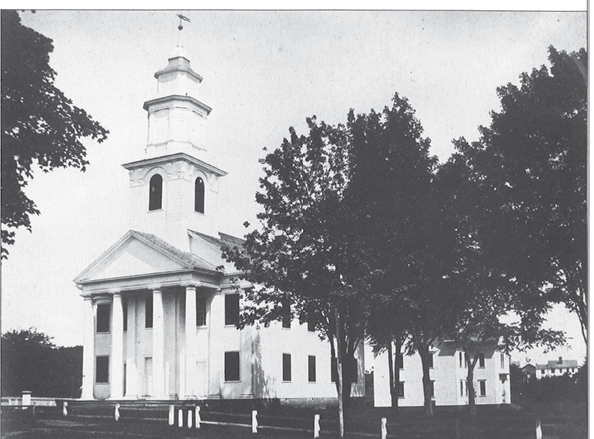



INDEX
P.O. Box 1106 • 610 College Hwy, Southwick, MA 01077
Office: (413) 569-0266 Office & FAX: (413) 569-5325
Email: magazine@southwoods.info
www.southwoodsmagazine.com
Advertisers should check advertisements the first day. Southwoods Magazine shall not be liable for failure to publish an ad, for typographical errors or errors in publication except to the extent of the cost of the ad for the first month’s insertion. Adjustment for errors is limited to the cost of that portion of the ad wherein the error occurred. Our usual publication date is between the 13th and the 15th of the month. To insure placement, ad copy should be submitted by the 1st of the month. No ads may be pulled later than the 24th of the proceeding month.
ADVERTISING RATES
DISPLAY ADS: Cost depends on column height x width. Call us for actual sizes and prices.
COUNTRY PEDDLER: Twenty words (20) for $6.00, each additional word 5¢.
Southwoods Welcomes Your Comments & Questions
Call (413) 569-0266 or Email Your Suggestions tomagazine@southwoods.info
This Month’s Cover:
Digital Art by
Southwoods
DIRECT MAILED to 13,500 homes & businesses
in the towns of Southwick, Westfield, Feeding Hills, Tolland,
Granville and Northern Connecticut (West Suffield, Granby and beyond).
Serving Massachusetts and Connecticut
Publisher: Carole Caron
Editor: Lyssa Peters
Layout/Design Artists:
Martin Lee, Cole Ludorf,
Advertising Consultant: Kris Sanders
The House at the End of the Lane
By Phil Pothier ................................................................. 3
Your Newly Acquire Plants By Ed Sourdiffe ................... 4
History of the Congregational Church
By Elethea Goodkin ......................................................... 8
Country Cooking By Mary Kvarnstrom ....................... 11
Where are they now? Debbie Reynolds
By Elaine Aubrey ........................................................... 14
The Dog Bite By Tonie Ann White ................................ 16
Southwoods Bulletin Board ...................................... 18
Classifieds ..................................................................23
Through the remainder of this year, Southwoods will be running past articles retelling stories of Southwick’s past for the upcoming celebration of Southwick’s 250th Anniversary.




By Phil Pothier
There’s an old worn out house at the end of a lane,
And I long just to see it once more.
For twas there in my childhood I spent happy days
With the family I’ll always adore.
My silver-haired mother is gone now I know,
And the family have all gone away.
Yet somehow that house still brings thoughts to my mind,
Of a by-gone and wonderful day!
That old house gave a welcome to neighbors and friends,
Whatever their status or worth.
For the love that was there was a Joy that we shared.
The greatest of joys on the earth!
The house was quite crowded, but we didn’t mind,
And no one told us we were poor.
There always was food and there always was love,
And that love helped us all to endure.
We had no TV and just hand-me down toys.
But good books and music galore.
And when I think back to those days of my youth,
I long to be back there once more.
On every week-end we would gather around
The piano while mama would play.
We sang all the old songs in tones young and strong,
Oh, how my heart longs for that day!
Those days are all gone, as are mother and dad.
And some of the children as well,
And some other family is living there now,
I miss it more that I can tell.
Sometimes I drive by it and think of the past,
And wonder if they love it too.
That ramshackle house isn’t worth much, they say,
I know that just isn’t true!



Caring for your newly
acquired Holiday Plants
By Ed Sourdiffe
Perhaps a good way to start this new gardening column is by introducing myself to those of you who don’t know me yet. My name is Ed, and I have always had a passion for plants. I have grown a wide variety over my life time. I have landscaped and designed numerous gardens, both professionally, and as part of my abiding interest in horticulture. I have built and maintained a variety of greenhouses, including a solar pit greenhouse. We have recently added a twenty by thirty foot conservatory to our home, a timber frame cabin, located in the hill towns of Massachusetts. My home is situated on 34 park-like acres, surrounded by gardens and natural wonders. For a number of years I was the Head of Historic Gardens at Hancock Shaker Village. Here I became well versed in Heirloom gardening, period gardening, and organic gardening. My passions also include, water gardening, Koi keeping, greenhouse gardening, and a great love of tropical plants. I am a Master Gardener, with the Western Massachusetts Master Gardener Organization. I am also known as the Green Thumb Guru. I can be seen on the lifestyles program, Mass Appeal on NBC affiliate, Channel 22. Here I am the resident plant and garden expert. I have presented topics at Museums, Festivals, garden centers and private events.


I still find time to assist home gardeners and to continually improve the extraordinary place I call home.
Now to get down to our topic at hand, caring for our newly acquired holiday plants. With the holidays freshly over, and the decorations already in storage, or soon to be, it can appear to be a dismal dark time of year. However, for gardeners, plants people and people who want to start gardening, our holiday plants offer us an opportunity to get a bit more greenery in our lives. Although it seems an eternity away, there are only about 12 weeks before the first day of spring. This fortunately will come sooner than you think. By now most of us have some pretty nice, left over holiday plants gracing our living spaces. Do not be tempted to throw these out with the old tinsel, garland and broken ornaments. Let’s instead let them brighten our homes, and help them to thrive. With the proper care we can enable them to grow lush and revisit the holidays next season, bigger and better than ever. Two top perennial favorite holiday plants we will be discussing today are the Poinsettia, and the Christmas Cactus. A good way to understand the care for these, and all plants, is to find out where they evolved. This will inform us on how to treat them. Then by basically trying to recreate these conditions we are almost guaranteed success with them. Another quick tip, especially for holiday plants that come wrapped in decorative foil, is to always empty the foil wrapper of any remaining water left over after watering the plant. The roots of all of these plants, like most plants, do not want to be left in standing water. It will lead to root rot and the final demise of your plant rather quickly. For our first plant a true queen of the holiday plants we have


the Poinsettia. This is truly a marvelous winter addition to any home. It is amazingly colorful and comes in a wide variety of sizes, from staggeringly huge, to almost miniscule. They come in a variety of colors ranging from the clearest of whites, to the reddest reds, to pinks and every shade in between. They even come in variegated and spotted and streaked forms. I personally like the unusual patterned, and the colors that don’t necessarily shout Christmas. The reason for this is because they work well for adding color to my other house plant areas after the holidays. I tuck the poinsettias in amongst my other house plants to brighten up the area. I always have a visitor asking me what a type of coleus or other type of plant it is that has such marvelous color this time of year. The Poinsettia itself, comes from the warm southern part of Mexico. They like to live in an environment that mimics this. They like to go slightly dry between watering’s. Ideal temperatures should be about 67 degrees to 75 degrees. These plants like most plants, do not want to be exposed to cold winter drafts. Also, do not let their leaves touch cold window panes or you will lose those leaves. Six hours a day of bright light is perfect for them. If you would like to get them to bloom next year, there is a simple process to follow. When the flowers, which are actually the colored leaves of the plants, look faded and dull, around March to May, prune them back to about 6” to 8“. Bring the plants outdoors after frost. Water the plants, and let the soil become slightly dry to the touch before watering again. Fertilize like you do your other house plants every two weeks. Come October, bring the Poinsettia indoors. Now for the slightly tricky part. You need to find a



place that will give the plant complete darkness for 12 to 15 hours a night, but make sure it gets at least 6 hours of light a day. Towards Thanksgiving you will see the plant starting to set flowers. Stop fertilizing, but continue to water as before. Leave the plant out and enjoy the unfolding show. Our next holiday favorite, is the Christmas Cactus. The flowering display of this plant always brightens up the darkest of winter days. These cacti flower in a myriad of colors, ranging from whites, to yellows, to fuchsias and every tone in between. These plants, despite the name, are not to be confused with desert cacti and they do need more water. These plants come from the mountainous regions of Brazil, along the ocean coast. Here they live in the branches of the rain forest as epiphytes. Thus they like to remain moderately moist, with good humidity. Temperatures of about 65 degrees are ideal. The light they receive should be moderate with some direct sun. From spring though early fall feed them every two weeks. During late fall through winter feed them monthly. During this time to trigger flowering, let the plant be exposed to 50 to 55 degree temperatures. The plant will need to be in the dark for 14 hours a day. This usually happens naturally in the home, unless there is strong artificial light. If this is the case then just cover the plant for this time period. There you have it, the keys to success for growing the two most popular holiday plants and reblooming them. Next time we will be discussing prepping for Spring, making garden plans and dealing with the flood of catalogs and everything related. Also if you want more information, on this and more plant related topics like this go to Greenthumbguru.com. Until then,“You ought to be gardening”!









September 1996



As the folks of Southwick Congregational Church engage in plans to repair and refurbish the front of their historic, old meeting house, it would be interesting for all of us to learn more about the history of this structure. In future articles, other churches in town will be studied in the same manner.
The present Congregational Church building was con-structed in 1824, between spring thaw and winter freeze, as was necessary for a building of that size at that time. In those days, it should be remembered, the Congregational Church and the town were not separate, as they are today. The Massachusetts Bay Colony, and continuing until 1833, was a from its inception theocracy, and there was only one church, the Congregational. Many may have thought that our Pilgrim forefathers and moth-ers would have extended religious freedom to other denomina-tions in their new land after they, themselves, has experienced religious persecution in the old one, but that did not seem to be the case.
In a small town such as Southwick, this interlocking of church and state translated into the requirement that every town have and support a Congregational minister and meet-inghouse. The Church was governed spiritually by the Church membership and temporally by the Congregational Society. To become a Church member, one had to be elected or approved by a Church committee that determined that the candidate had undergone a suitable conversion experience.
However, every voting member of the district or town be-longed to the Church Society because all were required to pay the ministerial tax to support the Church. (Women were not allowed to vote, in those days; not until 1860 were women ac-corded the right to vote for deacons of the church.) It was the male property owners and voters, regardless of their religious

persuasion, who were held responsible for the financial sup-port of the Congregational Church. Finally, in 1806, legisla-tion passed excusing “dissenters” from paying this tax “if the dissenter lodged with the Town Clerk a certificate stating that the dissenter was a bonafide member of a religious persuasion other than the ‘Standing Order’.”
It is not clear if early Baptists, Methodists, and Episcopa-lians in town used the meetinghouse for their own services since they were paying for its upkeep. ln any case, the town-wide tax for the Congregational Church was a source dissen-sion among the different denominations, Finally, the Baptists built their own meetinghouse in 1822. It was located about where Dunkin Donuts and the Eagle Mart now stand. Then, in the summer of 1823, the original Congregational meeting-house, on Bugbee Road, across from the Old Cemetery on Col-lege Highway, burned to the ground.
This event brought to focus, a strong disagreement among Church Society members as to where the new church would be located, whether in the southern or northern part of the town. According to the Church history booklet “Two formal Town Meetings were called, these met and adjourned to meet again¡ a total of thirteen times; more than six months were to pass; the recommendations of both in-town and out-of-town committees were rejected; and at least one-half of the Congregational Soci-ety (especially those in the southern part of Southwick) with-drew and formed their own Episcopal Society before the issue of merely where to place the new Meetinghouse was finally decided.”
The people who had wanted the new meetinghouse in the southern part of the town broke away from the Congrega-tional Society and Church and built their own church in 1826, the present Methodist Church located at Gillett Corners. Ac-cording to Maud Etta Gillett Davis in her Historical Facts and Stories About Southwick, “The so called Episcopalians living in town were probably instrumental in building the church, though the Methodists in town shared the expense-and used the building from the beginning.” An agreement was made that each denomination would have half the Sabbath to wor-ship in this meetinghouse.
The people who had wanted the new meetinghouse in the northern section of town were the ones who created the pres-ent Congregational Church meetinghouse. Mr. Enos Foote of Southwick donated one half acre of land in the present center

of town to the Congregational Society with several reservations and stipulations, one of which was as that he or his heirs be al-lowed use the basement of the structure for storage. This right was finally purchased by the Ladies Benevolent Society of the Church from his heir, Mr. John Boyle, in 1885-1888 for $138.25.
If we could return to Southwick in 1824 before the new meetinghouse was built at the intersection of what is now Col-lege Highway and Depot Street, this is what we would see: on the Northwest corner of the intersection stood the Southwick Inn, not the present building but an earlier, lower, rambling building that burned in 1905. On the southwest comer, where the Southwick Public Library is now, was the house of Thadde-us Foote, a lawyer and brother to Enos. On the southeast comer, in the present Old Colonial Gift Shop, lived John Mills, also a lawyer and son-in-law of Enos Foote. His law office was located just across Depot Street, then called Mill Street, about where the town green and war memorial are now located. From his office there was an open field that stretched north to the home of Enos Foote, located just north of the present Congregational parsonage. Foote built this house in l500, but it is remembered for its later owner, Matthew Field. The house burned to the ground in 1928.
It was this open field that was given for the location of the new meetinghouse. The money for the structure was raised by subscriptions and came to about $5000. The builder chosen was Captain Isaac Damon of Northampton. He was a contrac-tor and builder with a Good reputation, as he had already de-signed and built the Congregational Church meetinghouse at Court Square in Springfield, Mass. In 1819. Other structures he built included the meeting house on the hill in Simsbury, Con-necticut, the Center Church building in New Haven, and the Northampton Congregational Church meetinghouse.
He was also a bridge builder and his structures spanned the Connecticut, Penobscot, Mohawk, Ohio, and Hudson Riv-ers. “The committee showed great wisdom in their choice of builder,” says the Congregational Church history.
Imagine in the spring of 1824 watching skilled workmen as-sembling from many communities in western Massachusetts to construct the Congregational meetinghouse. “Materials were contracted for, stone was quarried, hardware forged and fashioned, and lumber sawed. From New Hampshire came the huge logs from which were made the beams that support the structure. These logs were floated down the Connecticut River to the mills near Holyoke, there sawed to the desired propor-tions, the timbers were then carted overland to Southwick.”
Construction of the meetinghouse began on May 2, 1824. Teams of horses pulled scoops that removed the earth for the

cellar hole. Blocks of stone, pre-cut and dressed, were set in place for the foundation, Skilled craftsmen, Mr. Jones and Mr. Miller of Springfield and Mr. Alvord and his two sons of South Hadley were recorded as masons for the construction.
Timbers were prepared in the old way by cutting tenons and mortises (interlocking connections) and drilling holes for the wooden pins and iron bolts with auger bits. Each joint was numbered so that every beam of the frame would be put in its proper place.
The timber frames for each wall were assembled on the ground. Tenons were fit into mortises and these were secured with hardwood pins that had been presoaked in brine to shrink them. The pins fit in ugly at first, but after they had swelled from the moisture in the air, they would hold firm “for all time” up until this very day.
Early on the morning of June 11, 1824 workers gathered to raise the frame. It took three days with horses and oxen strain-ing at the winches to raise the frames into place with “sweat-ing men” driving home pins and tightening nuts on bolts. By evening of June 13, 1824 the setting sun gleamed through the upright framework of the new meetinghouse.
Then carpenters, masons, and pew makers set to work to complete the meetinghouse. Special struts and structure had to be built to support the round, domed ceiling of the meeting-house. Mr. Shepherd and Mr. Whitmarsh of Springfield and Mr. Daniels of New Haven, pew maker, completed the pews and al-tar and other work in the sanctuary. “On the floor of the Sanctu-ary were 48 white boxlike pews with hinged doors. There were two aisles with double pews between the two aisles and a sec-tion of single pews extending from the aisles to both the north and south walls. In front was a small platform upon which sat a large pulpit. Flanking the small platform on each side was


one wood-burning stove with a short stove pipe thrusting into the two chimneys in the east wall of the Sanctuary. The pews extended 12 deep from near the stoves and platform to the west wall so that in order to get from aisle to aisle in the rear one had to enter the Narthex. Today, only the seats in the balco-nies remain exactly as they were the day the Meetinghouse was completed.
Erastus Hunt and his apprentice, Erastus Bardwell, fash-ioned the four graceful pillars for the front portico. Much later, in 1950, when the original pillars and steps of the Church had to be replaced, two letters and other papers wrapped in coarse brown paper describing the building of the Church, were found under the north column. They had been put there by the workmen and included, among other things, a list of the work-men, the minister at the time. Rev. Calvin Foote, the statement “No accident happened of any consequence” during the raising of the church, and the conclusion, “To the people of Southwick who may be living when these columns shall be removed and others erected instead, these few lines are respectfully dedi-cated by their friend one of the workmen. Amasa Wade, Sr. of Williamsburgh, Mass.”
When the new pillars were constructed, a metal box con-taining copies of a letter dated March 15, 1765, the papers found in the pillar, a newspaper account of the findings of these pa-pers, a list of members
of the Church at present, and a list of the officers of the
Church for that year were placed under the south pillar. The originals are “in safe keeping in the bank,” according to the church history booklet.
By November, 1824 the Congregational Church meeting-house was ready for its dedication service. The Portico Narthex with steeple, and the Sanctuary were all that were built of the present complex at that time, and nothing would be added for one hundred years. The first addition, the Parish House or Old Fellowship Hall, was completed in 1924, and second, the New Fellowship Hall, was dedicated on March 17, 1957.
A photograph of this Church has been included in at least one book of old New England meetinghouses, because, as was well put by the Church history regarding the dedication cer-emony, “The building stood on that day, as it does now, one of the finest examples of a traditional New England meeting-house to found anywhere,”
Sources used in this article: Thanks to Geneva Baillieul for permission to use her line drawings that illustrated the South-wick Congregational Church History. 1773- 1973 (Southwick Congregational Church History Comrnittee,1973), Also used: Historical Facts and Stories About Southwick (Maud Etta GiII-ett Davis, July, 1951) and Southwick Massachusetts 1770-1970 Bicentennial

The Congregational Church early 1890’s. Architect Isaac Damon designed the Southwick Congregational Meeting House. Over three days, July 11th, 12th, & 13th 1824 the building was raised.

Add water to mushroom liquid to measure 1 /2 cup. In bowl, combine liquid with next five ingredients. Refriger-ate, covered, 30 minutes .. On sheet of waxed paper pat meat into 12x8-inch rectangle. Drizzle with bacon fat. Leaving a 1 /2-inch border, sprinkle on basil, parsley., bread crumbs, oregano and thyme. Then scatter on onion, mushrooms, ba-con and cheese. Starting on short side, roll up meat like a jelly roll, using wax paper as a guide. Press .down on meat when necessary, to contain filling. Place seam side down into a 9x13-inch pan. Pour tomato sauce over. Cover with foil. Bake at 350°F for 1 hour.
1 can (4 oz) mushrooms (save juice)
1 lb ground beef
1/2 cup dry bread crumbs
1 egg
1/4 tsp garlic powder
1/2 tsp salt
4 strips bacon, fried and crumbled (save fat)
1 tsp dried parsley
2 Tbsp dry bread crumbs
1 small onion diced (about 1/2 cup)
1 cup grated Mozzarella cheese
16 oz tomato sauce
1/2 tsp oregano
1/2 tsp basil
1/2 tsp thyme
Meatloaf Bracciole


February 1999

In large bowl mix together and make into tiny meatballs (marblesize). Drop meatballs into simmering soup. Debone cooled chicken and return chopped meat to soup pot. Rinse and separate 2 large heads escarole, chopped. Place in sepa-rate pot and parboil about 15 minutes, using enough water to allow escarole to wilt down. Remove escarole from its pot and place in soup stock and meatballs. Let everything sim-mer on low heat for long time to .allow flavors to mingle. This soup also freezes well.
2 large onions, chopped
6 carrots, chopped
6 ribs of celery, chopped
3 celery tops, choppedLet this simmer 1/2 hour.
Salt and pepper to taste
1 Tbsp basil
2 Tbsp parsley flakes
Italian Wedding Soup
Meatballs:
1 cup bread crumbsmoistened with water
1 lb ground chuck or ground round
1 Tbsp parsley flakes
Salt, pepper and garlic powder to taste
1/2 cup grated Romano cheese
1 egg beaten







am very grateful that the surgeon who stitched my lip and the inside of my mouth back together did so with care and great skill. My lip scar did not even show until I was in my 30’s and even then most people didn’t see it. What was visible was a missing tooth in my smile for the next four years.
Dad brought a bouquet of roses to my hospital room and set them in one of the large windows by my crib. I felt loved. Dad also brought me a small plastic bunny which had pink overalls and was pushing a pink wheelbar-row with a wide wheel that rolled. I entertained myself for hours running my little bunny across the top of the white steel crib railing. It was fun to have something to do while being confined to a hospital crib. I had two room-mates. They were older than me and they were boys.
The nurse came and asked me what I wanted for breakfast and I re-
Debbie Reynolds


By Elaine Adele Aubrey
On a typical Wednesday, three days after Christmas, peo-ple were catching their breath while a well-known celebrity was breathing her last. Debbie Reyn-olds unexpectedly passed away at age 84 from a stroke on December 28, 2016 one day after her daughter, Carrie Fisher, died.
Back in the 1940’s Debbie was a welcomed change from the glamorous-looking starlets. She was more like the girl next door, very down to earth and unpretentious, all 5’ 2” of her. Proof of that was the way she grew up. Debbie was born in El Paso, Texas on April 1, 1932, as Mary Frances Reynolds and according to her son Todd Fisher in his book My Girls, when her family moved to Burbank, California, she was a “seven year old aspiring gym teacher and a proud Girl Scout.” In high
school she played the French horn and was a member of the Burbank Youth Symphony. As an adult movie star “She insist-ed her shooting schedule allow her time to attend her daugh-ter Carrie’s Girl Scout meetings on Friday afternoons.” Debbie wanted her kids to have time with her - to give some structure to their lives with “most nights dinner together at preciously 7:00 PM and Mom was there every night to tuck us in.” Todd Fisher’s book My Girls is worth a trip to the library.
Debbie’s life changed at the age of 16 when she entered the 1948 Miss Burbank beauty contest impersonating Betty Hutton. According to a biography by Ray Hamel and Dale O’Connor she initially entered the contest because everyone who entered received a silk scarf, a blouse and free lunch. Debbie won the contest and the day after she was offered a screen test by a War-ner Brothers film scout. That same year she was in the film June Bride and followed that with the musical The Daughter of Rosie O’Grady. Although once thinking of becoming a physical edu-cation teacher, show business won out. She became one of the most popular actresses of her time.
Throughout the 1950’s Debbie made many memorable mov-ies such as Three Little Words and at age 19 my absolute favorite Singing In The Rain. Maybe you too remember The Tender Trap, Bundle of Joy and Tammy and The Bachelor to name a few.
The 1960’s brought the public more with How the West was Won and The Unsinkable Molly Brown for which she received an Academy Award nomination. Debbie continued to act and sing for more than 40 years in film, television and the stage where she received a Tony Award nomination for Best Actress in a Musical for the 1973 revival of Irene. Throughout the 1970’s and 1980’s if she wasn’t on stage she was on television guesting in episodes like The Love Boat, The Golden Girls and Will and Grace.
During the 1990’s, Debbie owned a hotel/casino in Los Ve-gas which also housed her collection of Hollywood memora-bilia. The items ranged from famous gowns such as Marilyn Monroe’s windswept dress from The Seven Year Itch and Judy Garland’s ruby slippers from The Wizard of Oz. She had a collec-tion of 3,000 posters and drove to the homes of actor friends for autographs. Debbie considered herself a “movie-oholic” and had “over 4,000 costumes from the silent screen period to the 1970’s.” In 1979, she established a dance studio in North Hol-lywood specifically for dancers and over the years attracted many celebrities and renowned choreographers. This year the dance studio is adding a museum for Debbie’s collection. Opening day has not yet been announced.
When I visited Vegas in 1992, I made a point of going to Deb-bie’s Casino to see her show. As my sister and I stood in line for tickets an usher came along and handed us a huge birthday
Debbie
Reynolds





Singing in the Rain, with Debbie Reynolds, Gene Kelly, and Donald O’Connor was a huge hit in 1952.
card to sign as it was Debbie’s 60th birthday. Her performance on stage was more than spectacular as Debbie danced along a not-so-wide wall that went around the perimeter of the room. As she danced six feet in front of us, I snapped her picture and was surprised to hear her laugh and say, “Your flash didn’t go off!” Debbie was still the girl next door. Unfortunately by the time the show was over, her movie collection museum had closed for the night. Five years later I was sorry to hear her casino closed due to financial difficulties. But around that time a bright spot appeared in her life as she was awarded a Star on the Hollywood Walk of Fame.
During her lifetime, Debbie contributed to many charitable causes. One in particular involved mental health issues She became a co-founder of the organization The Thalians. In No-vember 2015, Debbie received the Jean Hersholt Humanitarian Award from the Academy Motion Pictures Arts and Sciences.
Debbie’s successful career kept her life going in spite of her “personal life’s ups and downs”. She married singer Eddie Fisher and divorced him four years later after a media scandal that involved actress Elizabeth Taylor. Debbie had two chil-dren with Fisher - daughter Carrie Fisher, writer and actress, remember Princess Leia in the Star Wars series, and son Todd “director, cinematographer, and producer of television, films, and documentaries”.
Two more marriages followed - one to shoe mogul Harry Karl but in their 13 years together he gambled away his fortune and hers. Number three was Richard Hamlett, also “the source of significant financial turmoil” in an 11-year span. These hus-bands, trusted by Debbie, left her with huge debts. During
her lifetime she survived so much. It took a stroke to bring her down.
On January 6, 2017, Debbie Reynolds’ funeral was held at the Forest Lawn Memorial Park in Los Angeles. She is buried there with some of her daughter Carrie’s ashes.
POSTSCRIPT - On September 30, 2018, I was working The Big E taking admission tickets from the swarms of people com-ing in. I didn’t notice the man coming towards me only the four or five stack of books he was carrying. He put the books down and I recognized them as copies of My Girls by Todd Fisher. Still not looking at the man but touching the top book, I said, “I read that book, it was wonderful, so well-written. Did you know it was written by Todd Fisher?”
He said, “I’m Todd Fisher.” I finally looked at the man and foolishly said, “Oh my God, you are!”
We talked for a few minutes; mostly me telling him how I was a fan of his mother and had seen her in person on her 60th birthday at her casino. Then not missing a beat I asked for his autograph and began searching for a piece of paper, Fortunate-ly, I found one of The Big E brochures that I had been saving and as I handed it to him with a pen, he asked for my name. He wrote, “To Elaine, Best Wishes” and then signed his name. As he walked into the Fairgrounds, I called out to him, “Good luck with the book” and he responded by pointing to the sky and said, “Mom’s looking out for me” and then he was swallowed up by the crowd. Of course, I was immediately sorry I didn’t ask where he was taking the books and then I wished I had gone in with him but well it all happened so fast. A few days later I checked out Barnes & Noble to see if Todd Fisher had been there for a book signing. I was told that he had been there and also left a few signed books for the shelf. Something most writers do not do. Of course I bought one and to prove I hadn’t dreamt it all I checked both signatures and yes they were iden-tical. Celebrities turn up in the strangest places, don’t they?




By Tonie Ann White
He was sitting facing away from me as I came up behind him. I reached out to pat his black doggie head when he spun around and hurled himself at me. We were eye level, he and I. I was three.
He caught me in the mouth, tearing out my front tooth and badly cutting my lip and gums. It happened so fast that I don’t know if I accidentally stepped on his tail or startled him. It was 1953 and Mom didn’t have a driver’s license or a car. I don’t remember the nice neighbor who drove Mom, my brother and me to the Springfield Hospital. What I do remember is that this experience didn’t affect my love for dogs.
I have a very strong memory of lying on the operating table and the nurse reaching toward me with something to cover my face. She was laughing and I thought she was killing me. Now that I am an adult I realize she was putting me under with some type of gas which is what they did in the ‘50’s. I also real-ize now that she was probably laughing as part of a conversa-tion with a co-worker. She wasn’t laughing at wide-eyed me. I




“For the next 3-1/2 years
I had a missing tooth
in my smile.”
quested kielbasa. That wasn’t an option, but I asked for kielbasa for lunch and dinner too. Of course you don’t get to eat kielbasa when you have a mouth and lip full of stitches. I’m sure I had a soft diet while my mouth was healing. My nurse was Polish and so was my dad so they both loved how I wanted kielbasa for breakfast, lunch and dinner. It’s funny, the crazy things you never forget.
The following year I was bitten by a dog while visiting my grandmother who lived in Chicago. I have no memory of it. What are the chances of that happening twice? Again, it didn’t turn me against dogs.
Years later, while canvasing my neighborhood to collect donations for the Leukemia Fund drive, I was going about my business walking door to door. One house had a German shepherd dog in the driveway. I saw him and just kept walking toward the house. Dad had a German shepherd who was big and lovable. I figured this guy was just a big puppy too. Well apparently I crossed the imaginary line on that dog’s driveway because he suddenly rushed at me and grabbed ahold of my arm. I purposed to go limp and kept telling myself to very, very slowly walk backwards. He realized I was not going to fight him nor was I proceeding any further towards his house, so he finally let go of my arm. His jaws were like a vise. I thanked God he let go of me and didn’t rip into me. I also thanked God that it was winter. I was wearing a heavy sweater and heavy coat but I still had a black and blue mark on my arm where he grabbed ahold and held onto me. Had I tried to fight him, I’m sure I would have ended up the loser. That was the last time I agreed to collect for any organization. I now have a healthy fear of other people’s dogs.


To include your event, please send information by the 20th of the month. We will print as many listings as space allows. Our usual publication date is within the first week of the month. Send to: Southwoods Bulletin Board, Southwoods Magazine, P.O. Box 1106, Southwick, MA 01077, Fax: (413) 569-5325 or email us at magazine@southwoods.info.

Pilgrim Covenant Church
Swedish Pancake Breakfast
Pilgrim Covenant Church will be holding their annual Swedish Pancake Breakfast and Scandinavian Bake Sale Saturday, March 7th, from 8-10:00am at 605 Salmon Brook St, Granby, CT. Join us for Swedish pancakes, lingonberries, bacon, sausage, & fellowship. Cost is a free-will donation; proceeds benefit upcoming mission trip.


YMCA of Greater Westfield
10th Annual Cook-Off
The YMCA of Greater Westfield “Chocolate, Chowder, & Chili Cook Off” fundraiser is Saturday; March 7, 2020, 11:30AM-1:30PM. We’re welcoming chefs and owners who might be interested in promoting their business and cooking for a good cause. Chefs will have the oppor-tunity to showcase their cooking skills by cooking either a chili, chowder or a sweet chocolate delight. The chili and chowder have to be cooked in a Board of Health approved kitchen. When registering, specify the exact name of each dish in or-der for it to be printed in the right ballot category. Votes will be tallied by 1PM. The voting process is in the spirit of fun with the main goal of fund raising. The YMCA will provide the room, tables, and the paper goods. You may decorate your table with any business paraphernalia to help promote your business.
This year’s fund raiser will support the LiveStrong pro-gram. LIVESTRONG at the YMCA is a free 12-week exer-cise program for cancer survivors who are currently in or have completed treatment and are physically deconditioned. Please reply as soon as possible to reserve a table at no cost, and have your name or restaurant’s name promoted. For more information, contact, Cindy Agan at 568-8631 x323 or Email:cagan@westfieldymca.org




Agawam
Congregational Church
Church Supper
The Agawam Congregational Church Supper Club’s “Post-Valentine’s Evening” will be held Saturday, February 22nd at 5:00 p.m. in the church hall. Doors will open at 4:45 p.m.
Supper, catered by Partners Restaurant, will include fresh fruit cup, a chef’s bakery choice with butter, roast turkey with stuffing, whipped potato & but-ternut squash, and chocolate mousse topped with whipped cream and candy valentine’s hearts and served in stemmed champagne glasses. Enter-tainment by local singing sensation Alexis Anamisis. There will be free door prizes.
Tickets will be available until Wednesday, February 19th and may be purchased by calling the church office at 413-786-7111 or Partners Restaurant at 413-786-0975. There will be no take out or tickets sold at the door. Tickets are also available at the church or Partners in Feeding Hills and must be purchased in advance. The church is handicapped acces-sible and has ample parking.

Southwick 250
2020 Events
To commemorate the 250th anniversary of Southwick’s incor-poration in November 1770, an extensive lineup of community events is proposed.
March 14th - Southwick Pub Crawl
March 26th - Presentation: The Congamuck Indians of the Southwick Area
Apr. 16th - Catered Dinner: Over the Hills & Far Away Camp Music
May 2nd - Step into Spring Southwick 5k & Wellness Fair
June 13th - Adult Bus Tour: The History & Geography of Southwick
July 4th - Citizens Restoring Congamond Boat Parade
July 18th - One Call Away Motorcycle Ride, Family Fair, South-wick Civic Fund Firework’s
August 15th & 16th - Revolutionary War Encampment
September 24th - Presentation: Southwick 250 Plymouth 400 - in the Footsteps of Pilgrims
September 26th - Autumn Pumpkin Festival
October 9-12th - Southwick Reunion Weekends
October 11th - Southwick 250 Grand Parade
October 18th - Sarah the Fiddler
October 24th - Walk with Southwick Spirits
November 7th - Taste of Southwick Gala
November 8th - Presentation: Paddy on the Railroad & John Boyle of Southwick

Holy Trinity & St. Mary’s
3 on 3 Basketball
Tournament
March 20th 6-9p & 21st 9am-6pm (depending on registration)The age groups are 8-9, 10-11,12-13 & 14-16. Double elimination. The tournament cost is $60 per team (Co-ed optional). Individuals can also sign up. Games will be played half court. Teams can be made up of 3 or 4 players Registration deadline is 3/13. Limited availability, so register early. All players have a guarantee of 2 games, pizza, snack and a t-shirt. The tournament will be hosted by St. Mary’s at 30 Bartlett St. Games will be played half court. To register or for more information call or email the Annette at the Holy Trinity office @ 568-1506 or htoffice @comcast.net.




Whip City
Travelers
Whip City Travelers have many new trips now ready for sign up for 2020. There will be 3 casino trips: March 4 to Mohegan Sun, April 8 to Foxwoods and May 6 to Mohegan Sun at $25 per trip.
March 2, Celtic Angels concert at the Aqua Turf with trans-portation, food and amenities included $90.
SELF DRIVES:
May 11, Monday, a tribute to Englebert and Tom Jones, a brunch at the Log Cabin, $65.
July 21, Monday, a tribute to Frankie Vallie and The Beach Boys, at the Log Cabin, with a choice of Twin Lobsters or Prime Rib, $65.
July 28, Tuesday, a Rod Stewart tribute, at the Log Cabin with the choice of Twin Lobsters or Prime Rib, $65.
Aug 12, Wednesday, A Dick Clark American Bandstand Trib-ute at the Log Cabin with the choice of Twin Lobsters or Prime Rib, $65.
For reservations or more info on any of these trips and more being planned, come visit us at the Whip City Travelers office at the Westfield Senior Center, M,W, or F from 9-12.


Southwick Cultural
Council
Applications for 21st
Art Exhibition
The Southwick Cultural Council (SCC) is now accepting applications from all regional artists for consideration at its 21st annual juried art exhibition. The exhibition will be held at the Southwick Town Hall on April 24-26, 2020.
The exhibit is open to fine arts, fine art crafts (sculpture, pottery), and photography on all subject matter and media. Originals, limited editions and open editions are allowed.
Interested artisans may pick up an application and guide-line at the Southwick Town Hall or, download from the town website, www.southwickma.org/cultural.



Our Lady of the Lake Church
St. Patrick’s Day Supper
Our Lady of the Lake Church will be hosting a St Patrick’s Day Supper sponsored by the Knights of Columbus Council #11178 Saturday, March 14th 6 pm to 7:30 pm. Menu will in-clude corned beef, cabbage, potatoes, onions, carrots, beverage & dessert. Cost is ages 13 to adult $10, ages 5 to 12 $5, under age 5 Free. (max. cost per family $25). Our Lady of the Lake Church is located at 224 Sheep Pasture Rd Southwick, MA 01077. Join us for our St. Pat’s Supper!!
Southwick Council on Aging
FREE Hearing Clinics
The Southwick Council on Aging will be holding FREE hearing clinics by Hearing Life (formally Avada) and also by New Ears. Each will hold a clinic the third Wednesday of the month with New Ears beginning in February. Call the office for more information and to book an appointment at 569-5498
Presidential Primary &
Special State Primary Election
Early Voting
Early voting will begin on February 24 and continue through February 28, 2020 for both primaries. Early voting is for every registered voter. Registered voters do not need an excuse or rea-son to vote early. Early voting can be done in person or by mail. In Southwick, early voting can be done in person at Southwick Town Hall, 454 College Highway during the following dates and times:
Monday February 24 8:30am - 4:30pm
Tuesday February 25 8:00am – 4:30pm
Wednesday February 26 7:00am – 7:00pm
Thursday February 27 8:00am – 7:00pm
Friday February 28 8:30am – 4:30pm
Also, registered voters have the option to request an early voting ballot through the mail. Simply fill out an application and mail it to Southwick Town Clerk, 454 College Highway, Southwick, MA 01077. You can find the application on the Sec-retary of the Commonwealth’s website: http://www.sec.state.ma.us/ele.
Rotary Southwick
Indoor Tag Sale & Flea Market
Bob Fox, Chair, Fund-raising and Events, announced that the annual tag sale and flea market will be held on March 28 from 8:00 am to 3:00 pm at the Southwick Florist Greenhouse, 636 College Highway, Southwick. The club is accepting sale items at the Greenhouse from Monday through Friday, 9 am until 4 pm, and Saturday, 9 am until 12 noon. No electronics will be accept-ed. Clothing will be accepted as long they are laundered and folded. Vendor tables are available for tag sale people, crafters, and businesses for $35 each. Proceeds from the sale will sup-port Rotary projects and programs such as scholarships, opioid awareness, community service awards, and the summer concert series. For more information or to rent a table, contact Bob Fox at 413 579 4585.




YMCA of Greater Westfield
LIVESTRONG® Program
The YMCA of Greater Westfield is offering LIVESTRONG at the YMCA, a research-based physical activity and well-being initiative that helps people affected by cancer reach their holis-tic health goals. This free 12 week exercise program will be on Monday & Wednesday 5:30PM-7:00PM. Enrollment is currently open. Registration and medical clearance form is required.
As part of LIVESTRONG at the YMCA, the Y engages cancer survivors through an approach that focuses on the whole per-son. Participants work with trained Y staff to build muscle mass and strength, increase flexibility and endurance, and improve functional ability. In addition to physical benefits, the program also focuses on the emotional well-being of survivors by pro-viding a supportive community environment where people af-fected by cancer can connect during treatment and beyond.
For more information, contact Cindy Agan, Health & Well-ness Director,413.568.8631 or email: cagan@westfieldymca.org


COUNTRY PEDDLER
CLASSIFIEDS
GOODS & SERVICES
GOODS & SERVICES
traprock driveways built & repaired. Gravel, loam, fill deliveries. Tractor services, equipment moved, York Rake. Bill Armstrong Trucking. 413-357-6407.
DELREO HOME IMPROVEMENT for all your exterior home improvement needs, ROOFING, SIDING, WINDOWS, DOORS, DECKS & GUTTERS extensive references, fully licensed & insured in MA & CT. Call Gary Delcamp 413-569-3733
RECORDS WANTED BY COLLECTOR - Rock & Roll, Country, Jazz of the 50’s and 60’s All speeds. Fair prices paid. No quantity too small or too large. Jerry 860-668-5783 or G.Crane@cox.net











Dump Runs - Single items to full clean-out. All items welcome. Call 1-860-286-0081

House for rent - Southwick, Ma Dutch Colonial 8 rooms, 3 beds, 2 bath, kitchen, living, dining, den, family room, 2 car garage. New Kitchen floor. No pets. Call 860-558-1077 before 2pm.
Grown fresh Shiitake Mushrooms - Pre-inoculated shiitake kits and logs available for the 2020 outdoor growing season. Also, now booking April timeslots for inoculate-your-own-log sessions in Granby CT. shittake@cox.net or 860-593-2267 www.rmsgrowers.com







